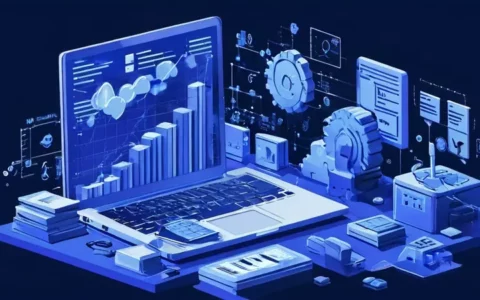
CNC programming books typically have various titles, but they usually include keywords such as "CNC", "Programming", "Machining", and "Guide". One well-known title in this category is "CNC Programming Handbook" by Peter Smid. This book is a comprehensive guide for engineers, programmers, and machinists, and covers a wide array of topics from the basic principles of CNC operation to advanced programming techniques. It includes detailed explanations of CNC syntax and structure, numerous code examples, and illustrations that provide a deeper understanding of the CNC programming process. Additionally, the book often serves as a reference tool due to its detailed appendices that contain important material and data necessary for effective CNC programming.
I. INTRODUCTION TO CNC PROGRAMMING
CNC programming is an essential skill in the manufacturing industry, where it forms the backbone of computer numerical control machining operations. Comprehensive guides like "CNC Programming Handbook" have become key educational resources. They cover a broad array of topics including CNC basics, programming principles, and advanced programming strategies.
II. UNDERSTANDING CNC BASICS
Before delving into programming, it is imperative to understand the basics of CNC machines. CNC stands for Computer Numerical Control, which signifies the automated control of machining tools by means of a computer. Books on this topic provide foundational knowledge of hardware, software, and operation modes of CNC machines.
III. LEARNING THE LANGUAGE OF CNC
CNC programming is akin to learning a new language. Fundamental to this is understanding G-code, which is the universal language used to instruct CNC machinery. Popular CNC books offer expansive lessons on syntax and structure, along with tutorials on how to write effective code to realize precise machining.
IV. ADVANCED CNC TECHNIQUES
Once the basics are well-understood, advancing to more complex programming techniques becomes crucial. Topics like 3D machining, CAM (Computer-Aided Manufacturing) integration, and multi-axis machining are covered. Expert-level books will include chapters on these advanced subjects, providing a deeper dive into the capabilities of CNC programming.
V. HANDS-ON EXAMPLES AND EXERCISES
Learning CNC programming is an interactive process. Quality books will include practical examples and exercises designed to solidify the reader’s understanding of concepts through application. "CNC Programming Handbook" includes numerous real-world scenarios that challenge the reader to engage directly with the programming process.
VI. APPENDICES AND REFERENCE MATERIALS
An often underestimated part of CNC programming books is the appendix. This section is essential for fast reference and typically contains tables, charts, and formulas that are vital for everyday CNC programming activities. It offers quick access to the necessary data and supports the programmer in making informed decisions.
In conclusion, the title of the book one would look for when seeking knowledge on CNC programming could vary, but it's crucial to look for one that provides comprehensive coverage of the subject, hands-on examples, and adequate reference materials. Books like "CNC Programming Handbook" by Peter Smid are recommended resources for anyone aspiring to master CNC programming.
相关问答FAQs:
What is the English name for CNC programming book?
The English name for a CNC programming book is usually "CNC Programming Handbook". This handbook provides a comprehensive guide to CNC programming, covering the fundamentals of CNC machining, the various programming languages used in CNC programming, and advanced strategies for achieving efficient and precise machining results. It includes practical examples, step-by-step instructions, and valuable tips and tricks for CNC programmers of all levels of experience.
What topics are covered in a CNC programming book?
A CNC programming book covers a wide range of topics related to computer numerical control (CNC) machining. Some of the key topics covered include:
-
Introduction to CNC machining: This section provides an overview of CNC machining, including the history, advantages, and applications of CNC technology.
-
CNC programming languages: Different programming languages are used in CNC programming, such as G-code and M-code. A programming book explains the syntax, commands, and functions of these languages.
-
CNC machine setup: Setting up a CNC machine correctly is essential for achieving accurate machining results. This topic covers the calibration, alignment, and tool setup process.
-
Toolpath generation: Toolpath generation is a crucial part of CNC programming. It involves creating a sequence of tool movements to machine the desired part. The book explains different toolpath generation techniques and strategies.
-
Cutting tool selection and optimization: The selection of the right cutting tools and optimizing their usage is critical for efficient and high-quality machining. A programming book provides guidance on choosing the right tools and optimizing their performance.
-
Troubleshooting and maintenance: CNC machines may encounter various issues during operation. The book covers common troubleshooting techniques and maintenance practices to keep the CNC machine in optimal condition.
-
Advanced machining techniques: Advanced topics such as 5-axis machining, multi-axis programming, and high-speed machining are also covered in some CNC programming books.
Who can benefit from a CNC programming book?
A CNC programming book is beneficial for various individuals involved in CNC machining, including:
-
Students and beginners: For those learning CNC programming for the first time, a programming book serves as an essential educational resource. It provides a structured introduction to CNC machining and programming concepts.
-
CNC machine operators: Operators who work with CNC machines on a daily basis can benefit from a programming book to expand their knowledge and improve their skills. It helps them understand the programming behind the machines they operate.
-
CNC programmers: Experienced CNC programmers can enhance their programming skills, learn new techniques, and stay updated with the latest advancements in CNC machining by referring to a programming book.
-
Engineers and manufacturing professionals: Engineers and professionals involved in the design and manufacturing of CNC machined parts can benefit from a programming book by understanding the programming aspects and effectively communicating with CNC programmers.
Overall, a CNC programming book is a valuable resource for anyone interested in CNC machining and programming, regardless of their level of experience or role in the industry.
文章标题:cnc编程的英文书叫什么,发布者:不及物动词,转载请注明出处:https://worktile.com/kb/p/1625994

 微信扫一扫
微信扫一扫  支付宝扫一扫
支付宝扫一扫 



